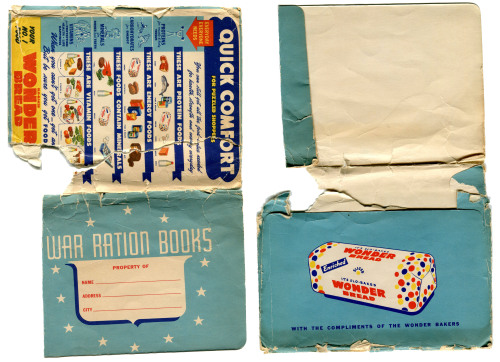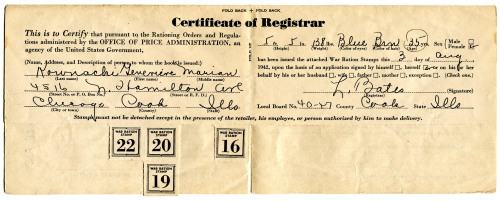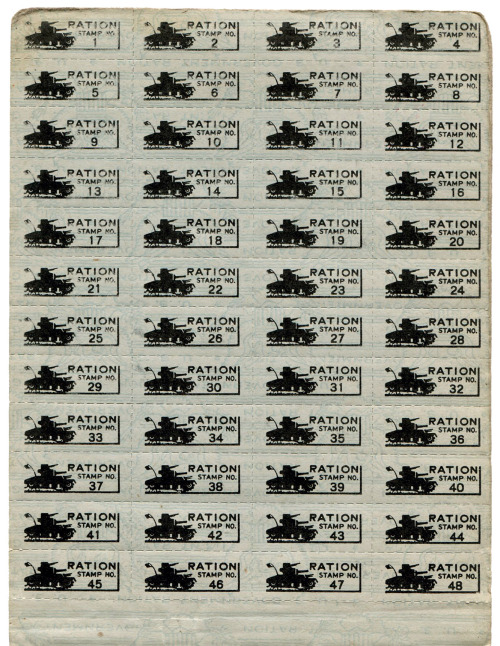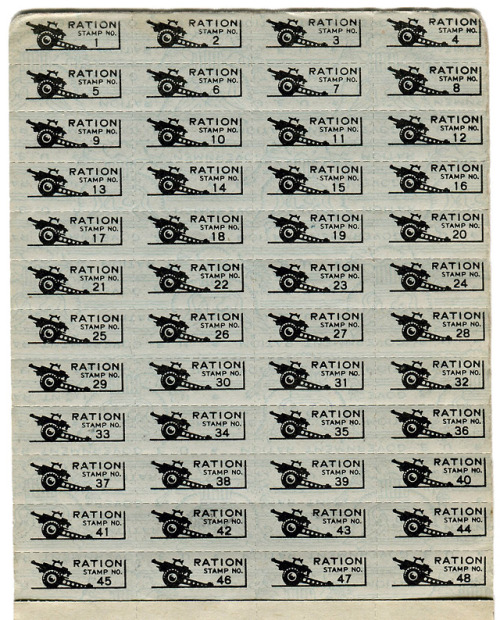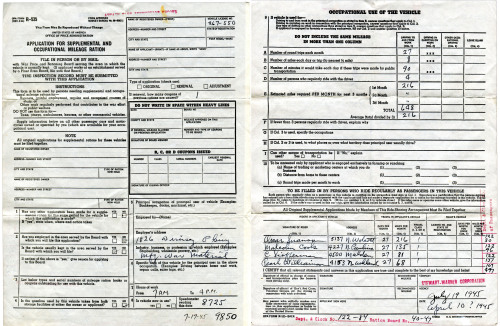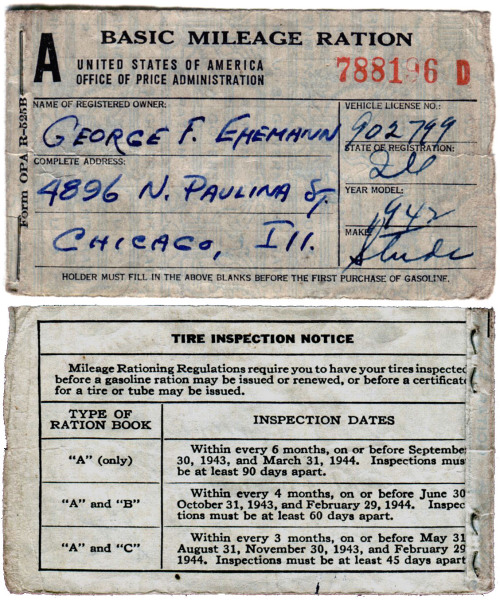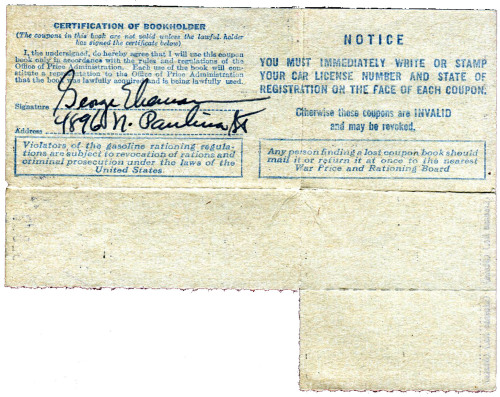#historical documents
Wrapping up my WWII rations collection are coupons for the grocery store. While the initial thought would be that this was to make sure food was available for the troops (which in some cases was the fact), the real reasoning went beyond the actual food stuffs. It actually had to do with the processing and delivery. Like I had mentioned in my earlier rations posts, a big driving factor was the use of rubber. Hence limiting the amount of stuff you could buy meant that less stuff would have to be transported = less wear on precious tires. There was also the thought that less tin would be consumed by cans if people couldn’t buy as much. While true, I have read that the tin shortage wasn’t really as bad as the public thought. Either way, the rations did help cutback on cans.
This is by no means all of the paperwork involved with rations. As a matter of fact there was a War Ration Book No. 4 issued later on that I don’t have, and plans for a Book 5 as well. I like how over time the rations became more stylized, as you can see comparing Book 1 stamps with Book 3. (And Book 4 was even more so.) Besides the graphics the other thing I really like is the slogan that was used throughout the war years. “If you don’t need it, DON’T BUY IT.” Words that I still live by today.
Post link
Along with all of the WWII gas rationing items I recently posted is this form. It apparently had to be filled out by anyone that needed supplemental gas rations; in my Grandpa’s case that would be for his “B” sticker he received because his work was considered vital to the war effort. The form was also used by people that required extra rations because of business needs, driving to school (I’d assume college), an extra long commute, or working for the public welfare.
In this day and age of fears about an intrusive government I can’t imagine this form being accepted. Not only does it require the driver to keep track of their mileage, it also needs to be signed by the place of employment and everyone in your carpool. If such a thing were proposed today we’d all be exposed to non-stop rants and ravings about “Big Government” trying to destroy our freedoms.
Post link
Rationing was a way of life during WWII. From gasoline to pantyhose, it seemed like everything was limited. In old photos you can see the ration stickers on car windshields (the green “B”), which was there to show the attendant how much gas you were allowed to purchase. With this you received stamps and other various paperwork that had to be filled out in order to get your fuel. An “A” sticker was issued to the general public. The “B” my Grandpa Ehemann received was because his job was considered vital to the war effort. This meant he was allotted up to eight gallons a week. There were six different window stickers and even a “R” one for farm vehicles. These were a part of everyday life. So much so they became part of popular culture, like at the end of this classic Bugs Bunny when his crashing plane doesn’t crash because it runs out of gas. Why, because he only had an “A” sticker.
An interesting yet lesser known fact is that the rationing wasn’t really created to control fuel consumption, but was there to help save on tires. Gasoline could be made domestically, but rubber trees don’t grow here (at least not in mass quantity). That raw material came from Asia, which of course was controlled by Japan at the time. That’s why if you look closely at the paperwork you’ll see a lot of references to mileage and tire inspections. There was even a national speed limit of 35 MPH put in place to help curb tire wear.
Here’s an example of some of the ration paperwork one had to keep track of to fill-up at the station. The photo is of my Grandfather’s 1942 Studebaker that is referred to in paperwork. There were some other ration related items I’ll get to later.
Post link

